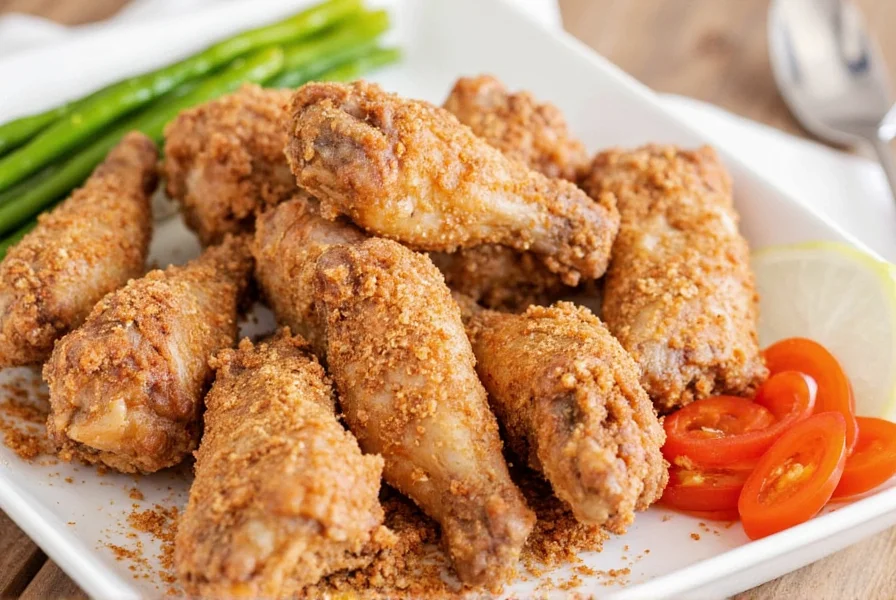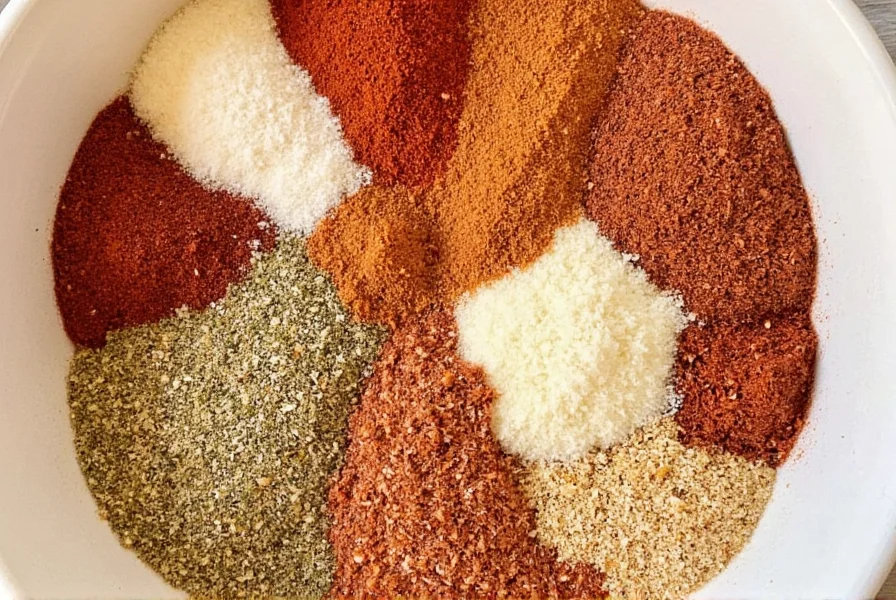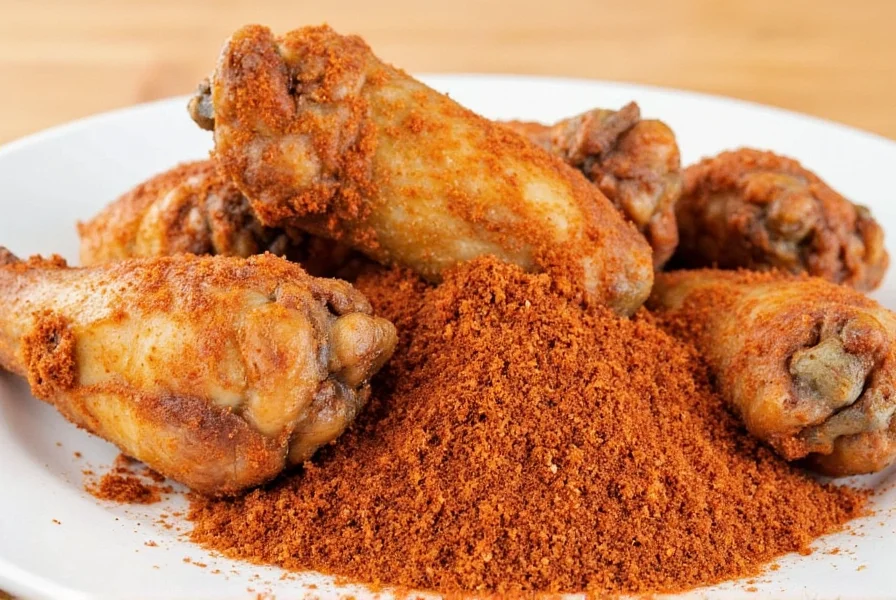Creating the ideal dry rub for chicken wings transforms ordinary game day snacks into restaurant-quality delights. Unlike wet marinades that can make skin soggy, a well-balanced dry rub enhances natural flavors while promoting that coveted crispy texture. This guide reveals the science behind effective rubs, precise measurements for consistent results, and professional techniques used by pitmasters.
The Science Behind Effective Wing Rubs
Dry rubs work through osmosis and the Maillard reaction. Salt draws moisture to the surface, creating a brine that tenderizes while sugar caramelizes during cooking. The combination of fine and coarse ingredients ensures even coating without clumping. For optimal adhesion, always pat wings completely dry before application—moisture creates a barrier that prevents proper rub adherence.
Essential Wing Rub Ingredients and Measurements
Professional results require precise proportions. This tested recipe yields enough for 2-3 pounds of wings:
| Ingredient | Measurement | Flavor Contribution |
|---|---|---|
| Paprika | 2 tablespoons | Base color and mild sweetness |
| Garlic powder | 1 tablespoon | Savory depth without burning |
| Onion powder | 1 tablespoon | Complex umami foundation |
| Brown sugar | 1 tablespoon | Caramelization and balance |
| Cayenne pepper | 2 teaspoons | Controlled heat level |
| Smoked paprika | 2 teaspoons | Wood-fired complexity |
| Black pepper | 1 teaspoon | Peppery bite |
| Salt | 1 teaspoon | Flavor enhancer and tenderizer |
| Dried thyme | 1 teaspoon | Herbal complexity |
Step-by-Step Application Process
Proper technique matters as much as ingredients. Follow these steps for perfect results:
- Thoroughly dry wings with paper towels—critical for crispiness
- Whisk all rub ingredients in a bowl to eliminate clumps
- Apply rub using fingertips with gentle pressure to ensure adhesion
- Cover all surfaces, including underneath and between drumettes
- Refrigerate uncovered for 30-60 minutes to allow flavor penetration
- Bring to room temperature 15 minutes before cooking

Cooking Methods and Timing
Different cooking techniques yield distinct textures:
- Oven method: Bake at 400°F (204°C) on wire rack for 45-50 minutes, flipping halfway
- Grill technique: Indirect heat at 375°F (190°C) for 35-40 minutes with lid closed
- Air fryer approach: 390°F (199°C) for 22-25 minutes, shaking basket twice
- Smoker process: 275°F (135°C) for 60-75 minutes until internal temperature reaches 165°F (74°C)
Flavor Variations for Different Palates
Customize your homemade wing seasoning recipe with these professional adjustments:
- Buffalo-style rub: Add 1 teaspoon cayenne and ½ teaspoon mustard powder for tangy heat
- Sweet barbecue version: Increase brown sugar to 1½ tablespoons and add ½ teaspoon chili powder
- Lemon-herb option: Replace thyme with dried oregano and add 1 teaspoon lemon zest powder
- Coffee-infused rub: Substitute 1 teaspoon espresso powder for smoked paprika for depth
Common Mistakes to Avoid
Even experienced cooks make these errors with dry rub recipes:
- Applying rub to wet wings (creates steamed texture instead of crispy)
- Using table salt instead of kosher (results in oversalting)
- Not allowing sufficient resting time (flavors don't penetrate)
- Applying too thickly (burns during cooking)
- Mixing wet and dry ingredients in rub (defeats purpose of dry rub)
Storage and Make-Ahead Tips
This easy chicken wing rub recipe can be prepared in advance:
- Store unused rub in airtight container for up to 6 months
- Keep in cool, dark place to preserve potency of spices
- Pre-mix batches for game day entertaining
- Double the recipe and divide between two containers for different flavor profiles
- Label containers with date and variation type

Frequently Asked Questions
How long should I let wings sit with the dry rub before cooking?
For optimal flavor penetration and texture, refrigerate wings with the rub applied for 30-60 minutes uncovered. This allows the salt to begin breaking down proteins while the spices adhere properly. Never exceed 2 hours with salt-heavy rubs as this can make the texture mushy.
Can I use this dry rub recipe for other meats besides wings?
Yes, this versatile barbecue wing seasoning mix works well on chicken thighs, drumsticks, and even pork ribs. For beef or lamb, increase the black pepper by 50% and add ½ teaspoon cumin. The rub proportions remain effective across most poultry applications without modification.
Why isn't my wing skin getting crispy with the dry rub?
Crispy skin failure usually stems from insufficient drying before rub application or overcrowded cooking surface. Always pat wings completely dry with paper towels first. When baking, use a wire rack to allow air circulation. For grilling, maintain consistent temperature without flare-ups. The sugar content in rubs can burn if temperature exceeds 425°F (218°C).
Should I add oil to my wing rub mixture?
No, authentic dry rubs contain no oil. Adding oil creates a paste that steams rather than crisps the skin. If concerned about dryness, lightly coat wings with oil before applying the dry rub. The oil layer helps the dry spices adhere without compromising the crispy texture achieved through proper cooking techniques.











 浙公网安备
33010002000092号
浙公网安备
33010002000092号 浙B2-20120091-4
浙B2-20120091-4